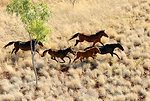Advertise Follow Us
Disciplines & Breeds
Shoeing for a Living
Managing Grand Prix Hooves
The top show horses that Florida farrier James Gilchrist sees face a grueling schedule — and so does he
Read More
Advice for Dealing with Underrun Heels in Western Peformance Horses
A pair of Texas farriers share how they deal with this all-too-common problem
Read More
Management of Long Toe, Low Heel in Hunters and Jumpers
This common foot problem presents a real challenge for farriers
Read More
Breeding Better Feet
When it comes to foot conformation, there are more questions than answers
Read More
Hoof-Care Innovation
Specialized Rehabilitation for the High-End Equine Athlete
At KESMARC, cutting-edge therapy is the every-day approach
Read More










